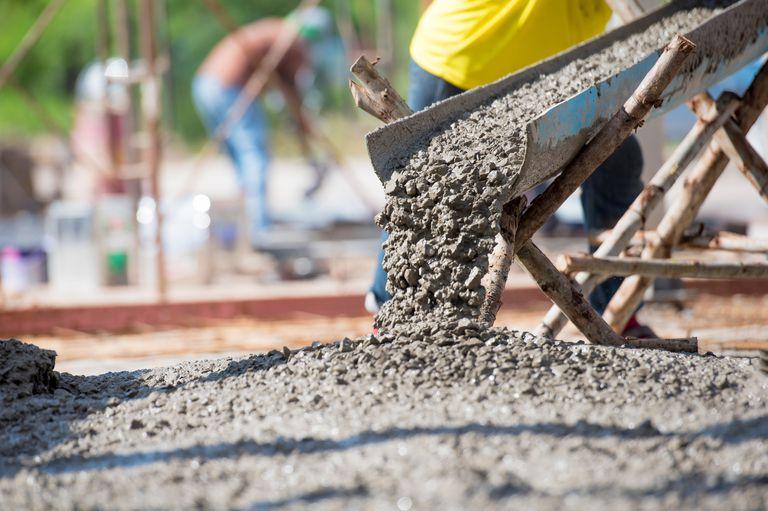Overcoming Common Challenges in Concrete Estimating for Construction Projects

Concrete is one of the most fundamental materials in construction, providing strength, durability, and stability to structures of all sizes. Accurate concrete estimating is crucial for project success, as errors in estimation can lead to budget overruns, material shortages, and project delays. Despite its importance, concrete estimating presents several challenges for construction professionals. This article explores the most common obstacles in concrete estimating and provides strategies to overcome them, ensuring smooth and cost-effective project execution.
Introduction
Estimating concrete quantities and costs may seem straightforward, but it involves multiple factors that can complicate the process. From fluctuating material costs to unpredictable labor availability, construction estimators must navigate a variety of challenges to produce accurate estimates. By understanding these challenges and implementing effective solutions, construction professionals can reduce errors, improve budgeting, and enhance overall project efficiency.
1. Fluctuating Material Costs
One of the primary challenges in concrete estimating is the variability of material prices. Cement, aggregates, and admixtures can experience sudden price fluctuations due to market demand, supply chain disruptions, or regional shortages. An unexpected rise in material costs can put pressure on the project budget and lead to financial strain.
Solutions:
-
Regularly monitor material prices and trends to incorporate current rates into estimates.
-
Include contingency allowances to account for potential price increases.
-
Establish relationships with multiple suppliers to ensure competitive pricing and reliable delivery.
2. Labor Shortages and Costs
Labor is a significant factor in construction costs, and skilled workers are often in short supply. Labor shortages can cause project delays, increase costs, and reduce the accuracy of concrete estimates if the labor component is underestimated.
Solutions:
-
Research local labor market trends and adjust estimates to reflect realistic wage rates.
-
Employ technology and mechanization to reduce reliance on manual labor.
-
Invest in training programs to develop a skilled workforce and retain talent.
3. Inaccurate Measurements and Takeoffs
Accurate material takeoffs are critical for precise concrete estimation. Even small measurement errors can lead to under- or over-ordering materials, resulting in waste or project delays. Miscalculating quantities can also affect labor planning and equipment needs.
Solutions:
-
Utilize digital tools such as Building Information Modeling (BIM) for precise measurements.
-
Double-check measurements and have them reviewed by multiple team members.
-
Implement standardized procedures for measuring and calculating concrete quantities.
4. Scope Creep
Scope creep occurs when the project’s requirements change during execution, without proper adjustments to the budget or timeline. This can happen due to last-minute design changes, unclear project specifications, or additional client requests, often leading to unexpected cost increases.
Solutions:
-
Clearly define the project scope in the initial planning stage.
-
Maintain open communication with clients and stakeholders to manage expectations.
-
Use formal change order procedures to adjust estimates when project requirements evolve.
5. Unforeseen Site Conditions
Unexpected site conditions, such as poor soil, underground utilities, or environmental restrictions, can significantly impact concrete work. These conditions often lead to additional costs and delays if not properly accounted for during the estimating phase.
Solutions:
-
Conduct thorough site assessments before finalizing estimates.
-
Use historical data from similar projects to anticipate potential risks.
-
Include contingency funds to cover unforeseen site-related expenses.
6. Inconsistent Concrete Mix Designs
Variations in concrete mix proportions can affect strength, durability, and workability. Inconsistent mixes can compromise structural integrity and result in material waste, making accurate estimating more challenging.
Solutions:
-
Standardize mix designs for different project types and conditions.
-
Implement strict quality control measures to maintain consistency.
-
Train personnel on the importance of adhering to specified mix proportions.
7. Poor Communication and Coordination
Miscommunication among project stakeholders can lead to errors in estimation and execution. For example, misinterpreted design drawings or unclear instructions can result in inaccurate concrete quantities being estimated.
Solutions:
-
Hold regular meetings with the project team to ensure alignment on requirements.
-
Maintain clear and detailed documentation of project specifications and changes.
-
Use project management software to facilitate communication and document sharing.
8. Tight Deadlines
Estimators often face pressure to deliver estimates quickly, which can compromise accuracy. Rushed calculations may overlook critical details, increasing the risk of errors in material, labor, or equipment costs.
Solutions:
-
Allocate adequate time for each stage of the estimating process.
-
Delegate tasks among team members to distribute workload effectively.
-
Use estimating software to streamline calculations and reduce manual errors.
9. Misapplication of Risk and Contingency
Estimators sometimes fail to properly assess project risks or allocate sufficient contingency funds. This can lead to financial issues when unexpected events occur, such as weather delays, design changes, or material shortages.
Solutions:
-
Conduct a comprehensive risk assessment for each project.
-
Allocate contingency funds proportionate to identified risks.
-
Regularly review and adjust risk assessments as the project progresses.
10. Inaccurate Cost Databases
Relying on outdated or incomplete cost data can lead to errors in concrete estimates. Inaccurate cost information for materials, labor, or equipment can result in budget overruns or unrealistic project plans.
Solutions:
-
Maintain up-to-date cost databases with verified market prices.
-
Cross-check data from multiple sources to ensure accuracy.
-
Implement a process for regularly updating and validating cost information.
Conclusion
Concrete estimating is a complex but essential part of construction project planning. Challenges such as fluctuating material costs, labor shortages, inaccurate measurements, scope creep, unforeseen site conditions, inconsistent mix designs, poor communication, tight deadlines, misapplied risk assessments, and outdated cost data can all impact the accuracy of estimates. By understanding these challenges and implementing effective solutions, construction professionals can produce more reliable estimates, control costs, and ensure the successful completion of projects. Accurate concrete estimation not only prevents financial and operational issues but also contributes to stronger, more durable structures built on solid foundations.


